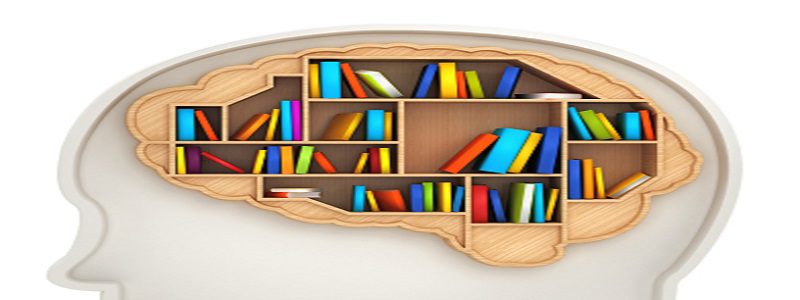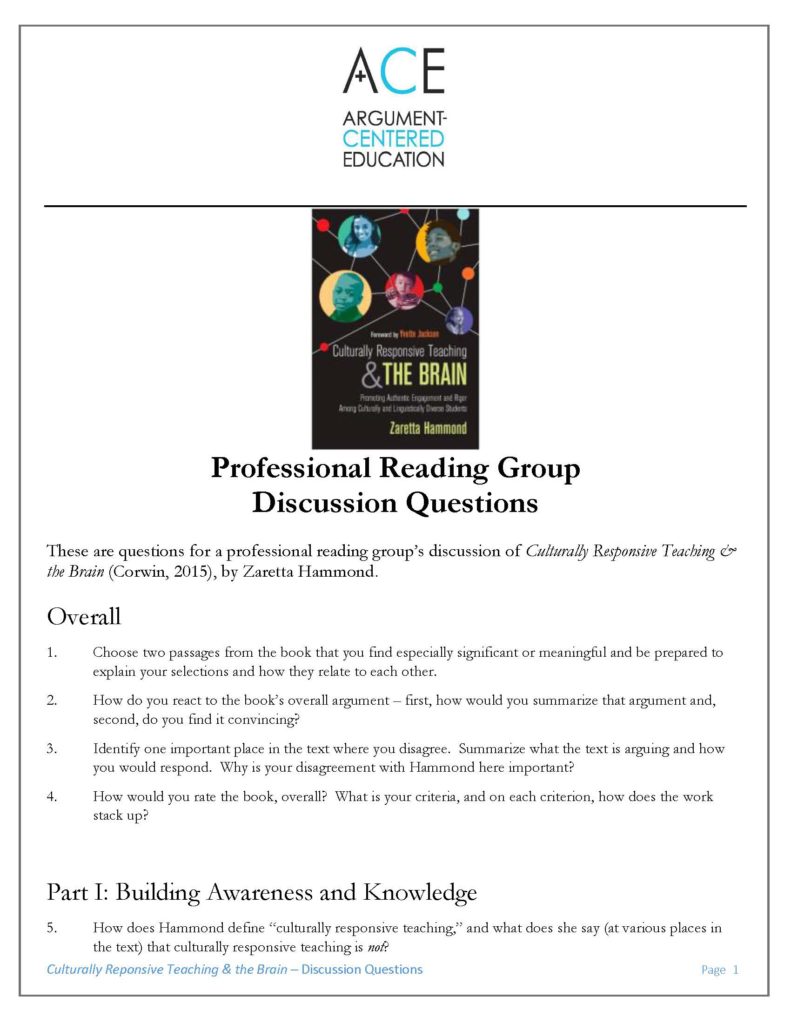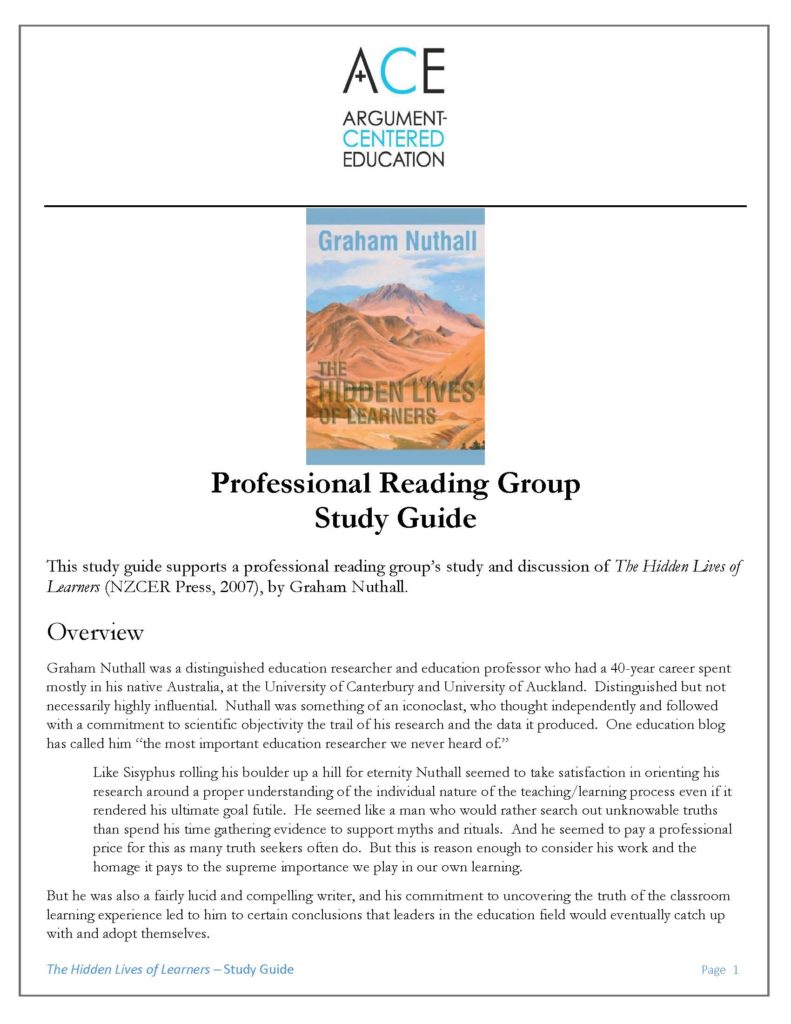
Professional Reading Group Resources
This school year, Argument-Centered Education organized and ran a professional reading group with one of our partner high schools, Daniel Hale Williams College Prep. We read one education book per quarter through the school year. The books were chosen by the participants (few in number but ambitious pioneers of the project), by voting at the start of each quarter on titles nominated by the members (each member can nominate one title per quarter). Only one of the four titles selected for the Williams Prep PRG this year was directly about argumentation; but all four had a great deal of relevance to making argument-centered classrooms, indeed all classrooms, highly functioning learning communities for all of their residents. The Williams Prep Professional Reading Group met for one period each quarter, during lunch, to discuss that quarter’s title. This post includes the resources that were produced for each of these four sessions, as a demonstration of how you might organize your own professional reading group (with or without our assistance).
Q1
The title for the first-ever Williams Prep Professional Reading Group session was Zeretta Hammond’s Culturally Responsive Teaching and the Brain: Promoting Authentic Engagement and Rigor among Culturally and Linguistically Diverse Students (Corwin, 2014). Hammond’s book was an excellent selection made by the Williams PRG. There are a number of qualities that make it worth reading (even if I don’t agree with all of her points).
Hammond’s book was an excellent selection made by the Williams PRG. There are a number of qualities that make it worth reading (even if I don’t agree with all of her points).
- It’s well-informed and well-supported in its coverage of current trends in education theory and practice. Hammond has done a whole lot of reading and research herself and she adduces this learning appropriately.
- There are sections of the text that delve into neuroscience, and particularly hot topic in the education world. I found her summaries of the way that the mind processes information and the way students transfer knowledge to their long-term memory both “technically scientific” and comprehensible. How useful that neuroscience is to us as educators is worth some time in discussion.
- She focuses on how we can be more successful with African-American and Latino “dependent learners,” which is a substantial portion of the student population of many American public schools. So while she may not always hit in her analysis and recommendations (again, a subject of discussion), she is almost always talking about the challenges faced by many public school teachers on a daily basis.
Our study guide teed up discussion on several of these questions, and others.

Q2
In the year’s second quarter, the Williams Prep PRG selected Ruth Schoenbach, Cynthia Greenleaf, and Lynn Murphy’s Reading for Understanding (WestEd, 2nd Edition 2012).  This is one of the seminal texts in the movement to make thinking and literacy “visible” in student thinking and comprehension. The book is dense, and aims to lay out the full Reading Apprenticeship pedagogy that some respected education institutions have taken up, including for example the University of Chicago’s Network for College Success. Reading Apprenticeship is cross-disciplinary (science and math get plenty of attention in the book), and places a lot of emphasis on meta-cognitive processes of reading, teacher-led think alouds while reading. establishing authentic purposes for reading, developing and teaching reading strategies, and logging and tracking reading experiences and performance.
This is one of the seminal texts in the movement to make thinking and literacy “visible” in student thinking and comprehension. The book is dense, and aims to lay out the full Reading Apprenticeship pedagogy that some respected education institutions have taken up, including for example the University of Chicago’s Network for College Success. Reading Apprenticeship is cross-disciplinary (science and math get plenty of attention in the book), and places a lot of emphasis on meta-cognitive processes of reading, teacher-led think alouds while reading. establishing authentic purposes for reading, developing and teaching reading strategies, and logging and tracking reading experiences and performance.
Rather than a study guide here, I assembled the 14 most useful and adaptable instructional strategies included in the text to advance the Reading Apprenticeship pedagogy. These included meta-cognitive graphic organizers, comprehension organizing charts, Talking to the Text forms, and Think Aloud templates.

Q3
The third selection of our reading group was The Most Reasonable Answer: Helping Students Build Better Arguments Together (Harvard Education Press, 2018), by Alina Reznitskaya and Ian Wilkinson.  Reznitskaya and Wilkinson’s thesis is that argument literacy is the key to college readiness (Reznitskaya draws on and quotes ACE academic adviser Gerald Graff on the point) and that teachers should use a “dialogic inquiry” process as a regular classroom routine, across disciplines, to enable students to collaboratively construct and test the best arguments in response to essential questions (i.e., debatable issues).
Reznitskaya and Wilkinson’s thesis is that argument literacy is the key to college readiness (Reznitskaya draws on and quotes ACE academic adviser Gerald Graff on the point) and that teachers should use a “dialogic inquiry” process as a regular classroom routine, across disciplines, to enable students to collaboratively construct and test the best arguments in response to essential questions (i.e., debatable issues).
Dialogic inquiry attempts to balance the critical thinking generated by responsiveness and refutation inherent to debate, with the collective wisdom and openness to changing one’s views to be found in a non-adversarial, socially collaborative inquiry-based seminar format. In short, she proposes and has been working (for many years) with an argumentation variant in the classroom. Intriguing and worth investigating.

Q4
The Q4 PRG selection was The Hidden Lives of Learners (NZCER Press, 2007), by Graham Nuthall.  Graham Nuthall was a distinguished education researcher and education professor who had a 40-year career spent mostly in his native Australia, at the University of Canterbury and University of Auckland. Distinguished but not necessarily highly influential. Nuthall was something of an iconoclast, who thought independently and followed with a commitment to scientific objectivity the trail of his research and the data it produced. One education blog has called him “the most important education researcher we never heard of.”
Graham Nuthall was a distinguished education researcher and education professor who had a 40-year career spent mostly in his native Australia, at the University of Canterbury and University of Auckland. Distinguished but not necessarily highly influential. Nuthall was something of an iconoclast, who thought independently and followed with a commitment to scientific objectivity the trail of his research and the data it produced. One education blog has called him “the most important education researcher we never heard of.”
Like Sisyphus rolling his boulder up a hill for eternity Nuthall seemed to take satisfaction in orienting his research around a proper understanding of the individual nature of the teaching/learning process even if it rendered his ultimate goal futile. He seemed like a man who would rather search out unknowable truths than spend his time gathering evidence to support myths and rituals. And he seemed to pay a professional price for this as many truth seekers often do. But this is reason enough to consider his work and the homage it pays to the supreme importance we play in our own learning.
But he was also a fairly lucid and compelling writer, and his commitment to uncovering the truth of the classroom learning experience led to him to certain conclusions that leaders in the education field would eventually catch up with and adopt themselves.
Our study guide pulled the 20 most important passages in the work, in our view, and asked teachers to discuss whether and to what extent each passage accorded with their professional experience and prior professional learning.


